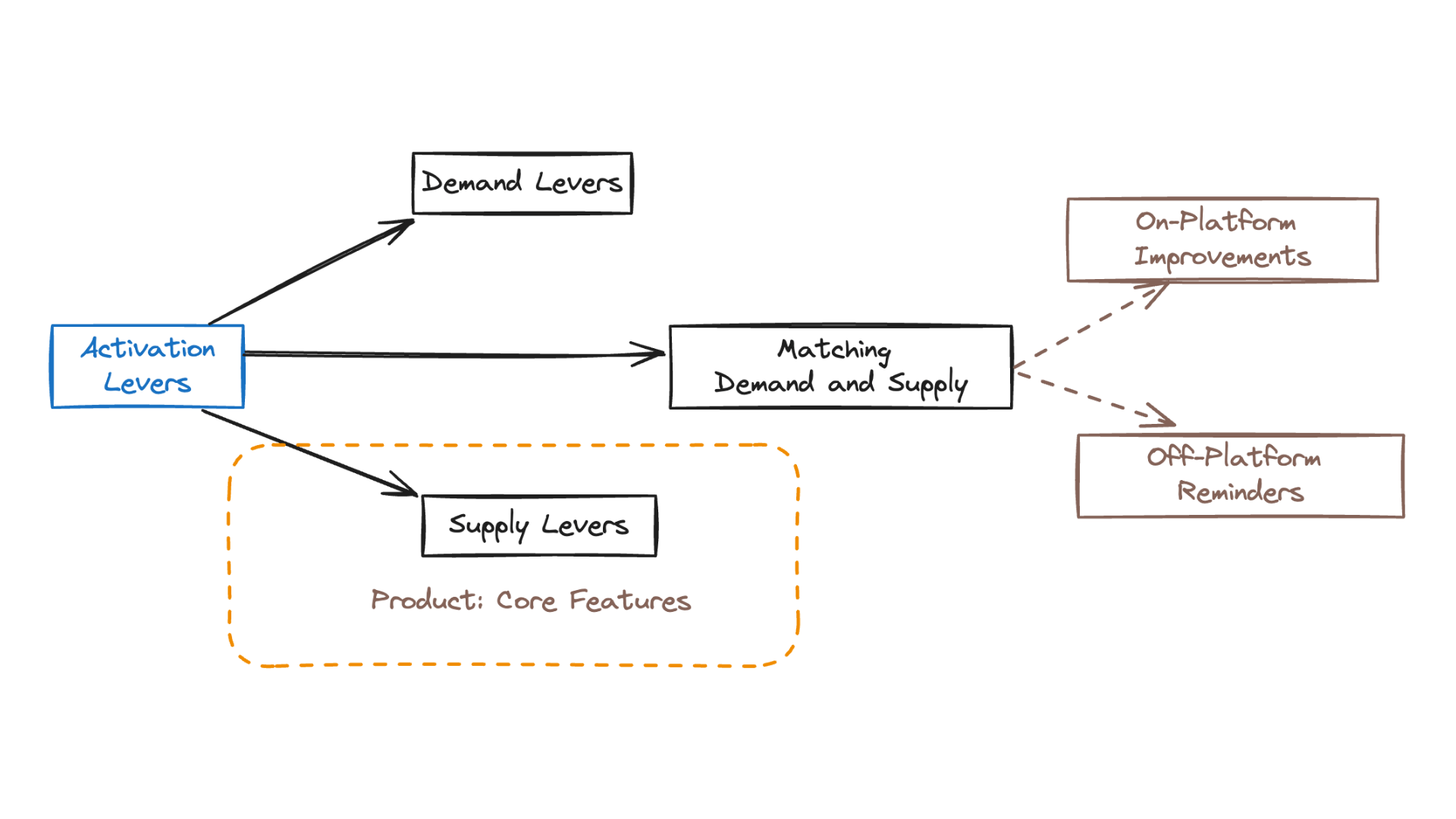How to Enhance Activation Rates with Product Levers in SaaS?
In SaaS platforms, core Product levers focus on the essential functionalities and offerings of the SaaS product, while on-platform and retargeting levers aim to quickly guide users to these value propositions.
Let's explore the difference with some examples:

Project Management Tools:
For a SaaS-based project management tool, product-side levers might include features like collaborative interfaces, real-time updates, and integrative functionalities with other tools. An example could be a platform offering seamless integration with commonly used office software, enhancing immediate usability and thereby activation.
Complementary tactics like offering an easy-to-navigate interface and a comprehensive free trial can lead users to these key features more quickly.
CRM Software:
In Customer Relationship Management (CRM) software, core product levers could be advanced analytics capabilities, customizable dashboards, and automated workflow options. For instance, a CRM platform might increase user activation by providing highly personalized customer interaction tools.
Supporting these with clear onboarding tutorials or informative onboarding email series can enhance the user's journey towards these central features.
Education and Training Platforms:
For educational SaaS platforms, primary product levers might include a wide range of course offerings, interactive content, and learner tracking features. A platform specializing in professional development could activate more users by offering industry-specific courses with certification.
Tactics like an engaging introductory course or progress milestones notifications can expedite discovery and engagement with these educational functionalities.
By focusing on both the foundational product-side levers and the journey-enhancing tactics, SaaS platforms can create a more engaging and effective path to user activation, catering to their users’ specific needs and preferences.